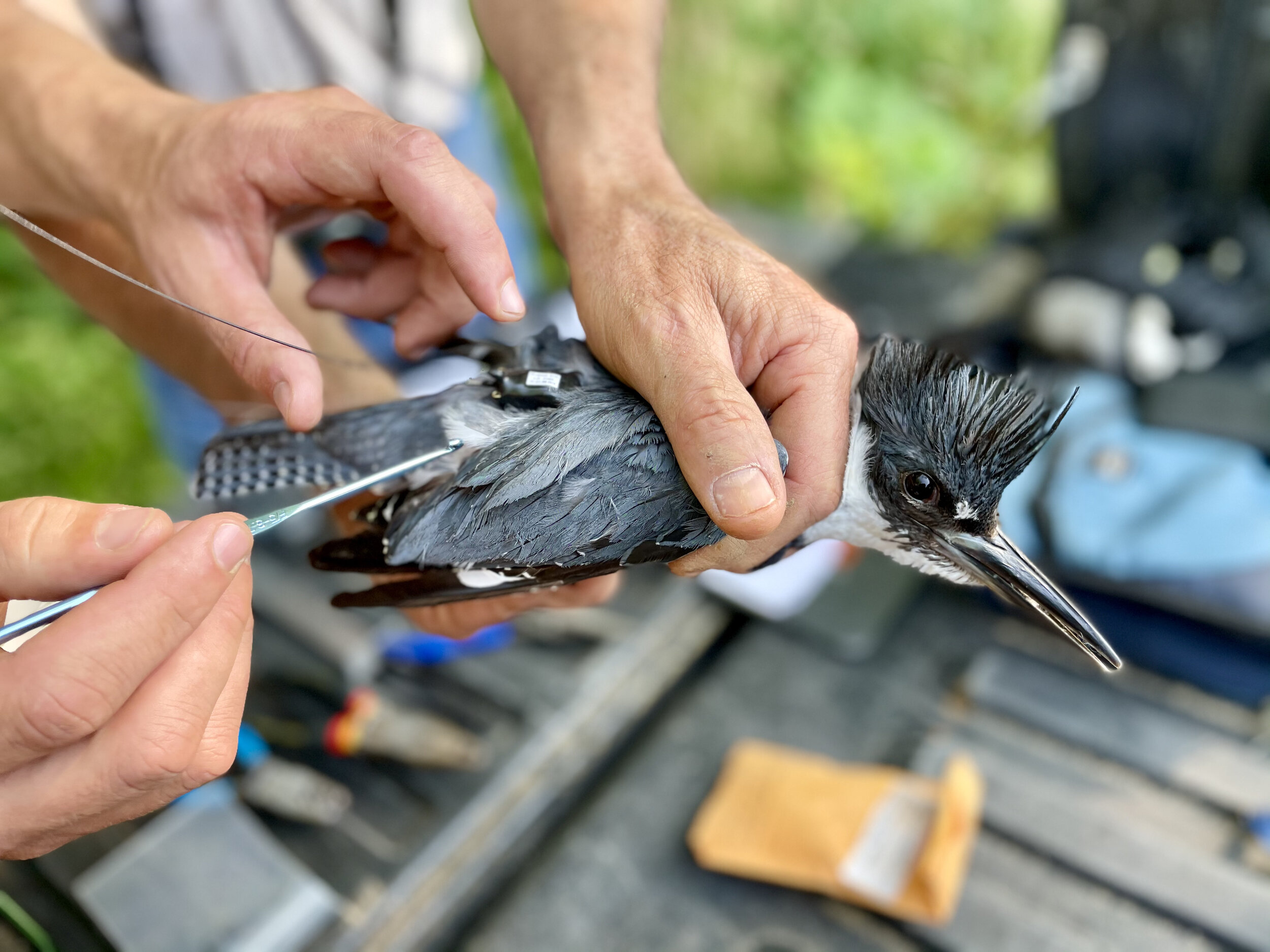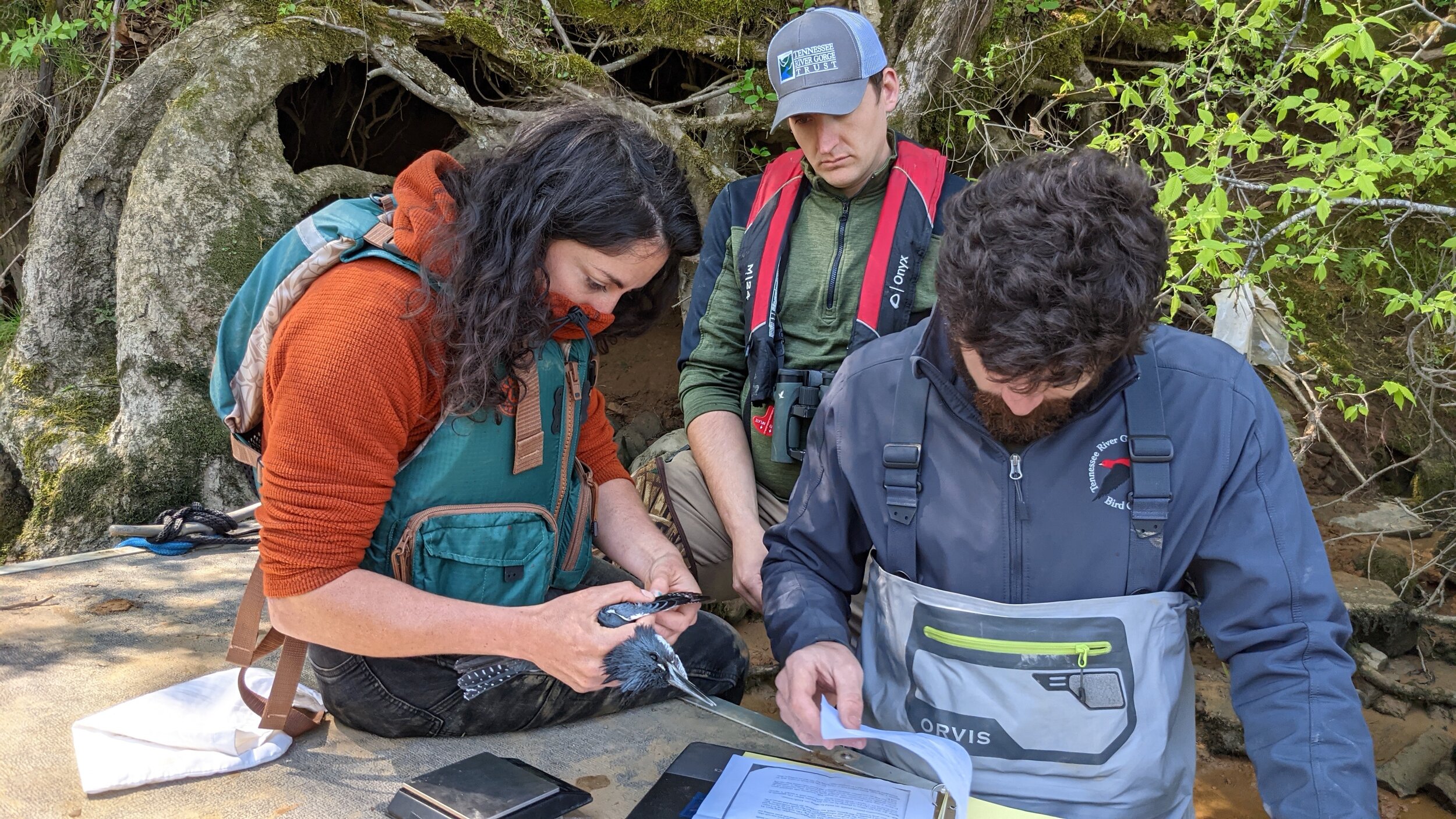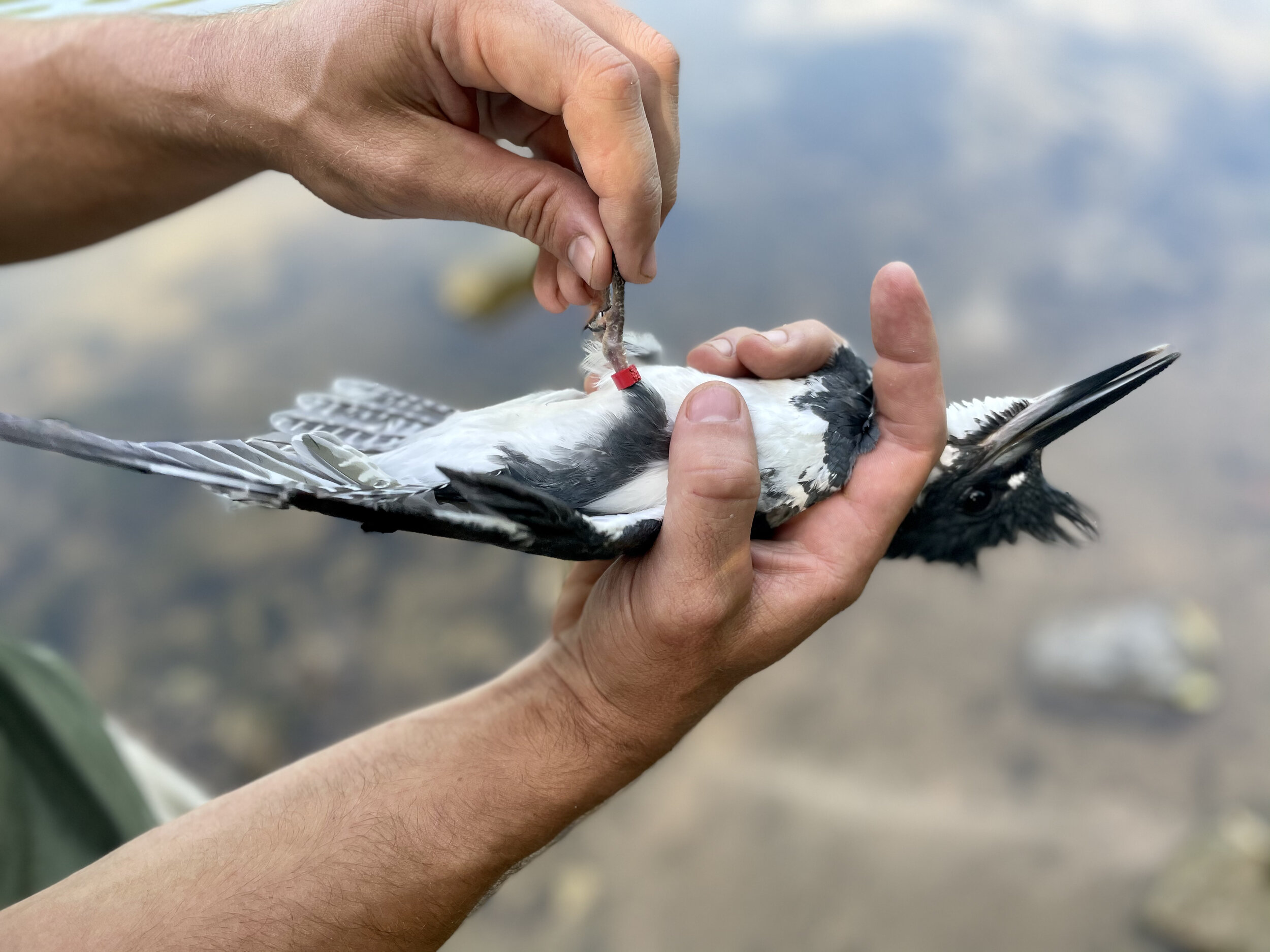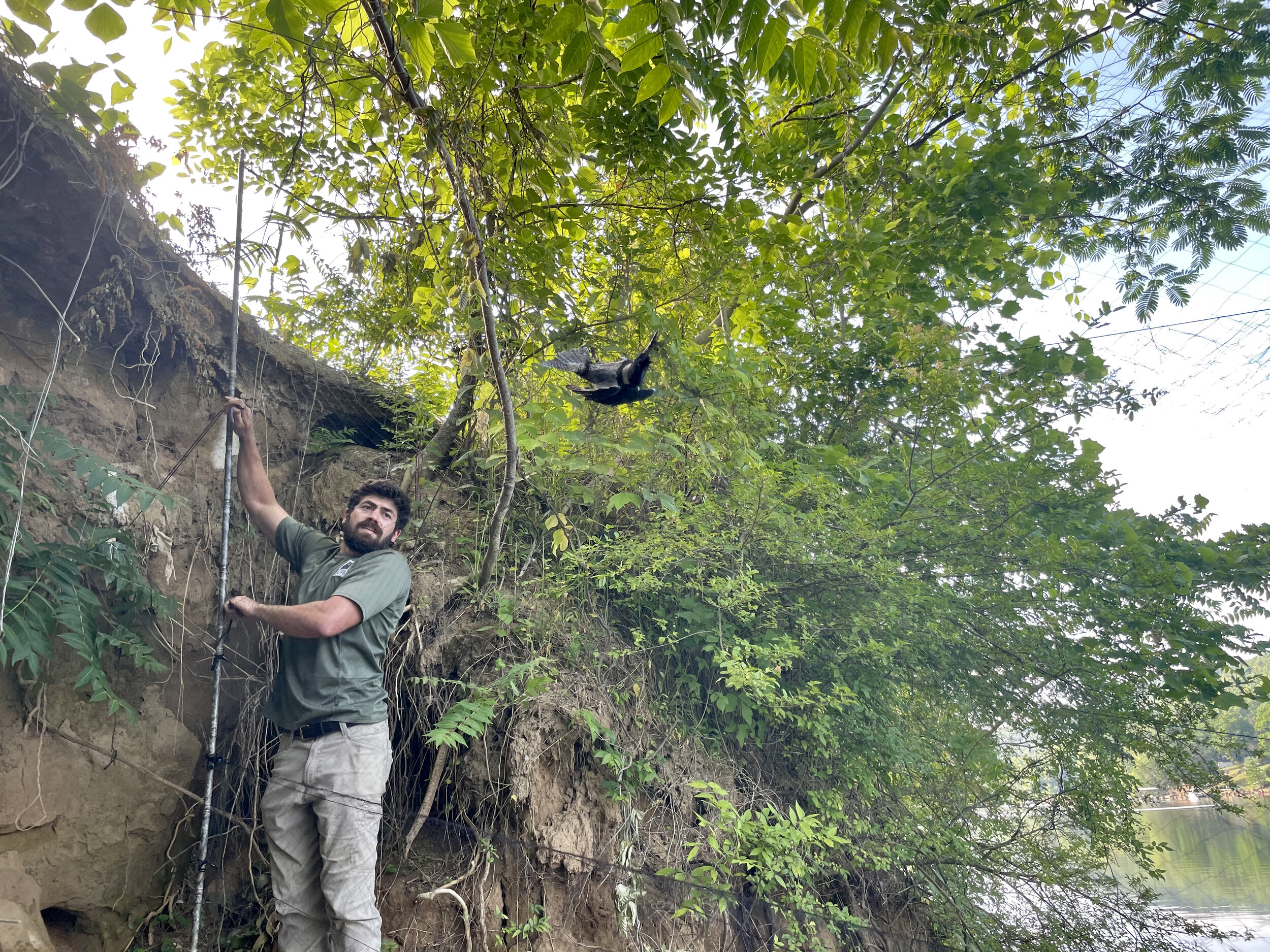Belted Kingfisher Research
The Kingfisher
Belted Kingfishers are a charismatic species that can be found along waterways as far north as Alaska and as far south as Columbia. They feed on aquatic organisms such as small fish and invertebrates by diving into the water to grab prey with their strong beaks. Males and females look almost identical except for a rusty band along the females’ chests. Their nesting behaviors are just as fascinating as their hunting strategies; adults dig an elaborate tunnel into steep embankments along the water that can reach up to 15 feet in depth. You’ll usually hear them before you see them thanks to their loud, mechanical rattling call.
Objectives
The TRGT bird research team is seeking to learn more about the common, yet mysterious, Belted Kingfisher. Although these birds are frequently seen along the banks of rivers, lakes, and wetlands, their seasonal movements are not well understood. To fill this knowledge gap, we have equipped 2 females and 2 males with GPS tracking units as part of a pilot study to determine how suitable these methods are for the species. Since no individuals of this species have been tracked, the study will provide new information about the species’ dispersal from breeding territories and migratory behaviors. This project will not only track seasonal movements but will also test capture methods and explore potential effects of carrying the units to help guide future research efforts.
The Tracking Unit
We used Lotek’s PinPoint GPS Argos tags. These units transmit a signal to the Argos satellite, and then back to us on Earth ultimately providing highly accurate locations.
Capture Methods
We capture the birds in mist nets strung up along the banks of the river. Birds are either lured into the net with a decoy and speaker playing the species’ unique calls or by predicting the flight pattern and capturing the bird as it passes by.












